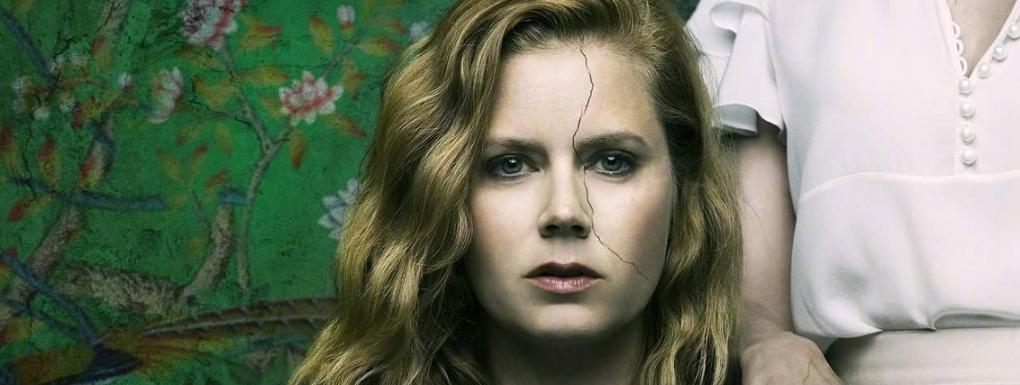Every once in a while, a show comes along that slowly grows on you and then stays with you long after the post credit scenes have rolled. You eagerly await the next episode, hoping for the week to pass by quickly just so that you can know what happens next. And when it finally ends, your jaw drops to the ground. Yes, ‘Sharp Objects’ is one of those shows. In fact, not since ‘Mindhunter’ have I seen a show so carefully constructed, every shot meticulously planned, every scene painstakingly crafted and every word thoughtfully drafted. Atmospheric, engaging and surprisingly affecting, ‘Sharp Objects’ is easily the best show of this year.
The final episode of the critically acclaimed miniseries managed to stay with me long after the end credits rolled. When I say that, I don’t mean that I reminisced the proceedings on the show in gleeful retrospect. I meant that I could feel something crawling under my skin and getting to me all the more I tried to forget about it. Yes, the finale hits hard, but it is the rather dark journey into the landscape of Wind Gap, and into the minds of Flynn’s disturbed protagonists that makes it all worthwhile, even though the sequence of events that unfold before the viewer’s eyes may be equal parts horrific and unreal.
This is a series I dare not revisit any time in the near future, and I mean that in a good way, still. It is dark, almost bleak, and psychologically disturbing at so many levels, often unforgiving in its dramatic repealing of the many secrets the human brain is capable of housing under the complex umbrella term ‘behavioural psychology’. All that chatter is not to take away from the show the visible effort and meticulousness put into crafting each shot and making things all the more eerie and unsettling. Kudos to the makers for retaining the essence of the novel in almost all aspects, and bringing to us a show that burns slow like the last light in the night, yet cuts as deep as a piercing blade.
Synopsis
/https%3A%2F%2Fblueprint-api-production.s3.amazonaws.com%2Fuploads%2Fcard%2Fimage%2F833418%2Fa4d6964a-e884-4cd6-8b6a-3a5261b5f8ad.jpg)
‘Sharp Objects’ is the story of Camille Preaker, played with great pathos by Amy Adams, a St. Louis based journalist with a troubled childhood who returns to her hometown to cover the disappearance and murder of two little girls. Upon returning home, demons from her past confront her as her difficult relationship with her family surfaces.
While the synopsis covers the basic core of it, there are so many layers to the show that are just worth peeling over, actions and relationships worth examining, and motives and motifs worth diving deep into, as the sleepy town of Wind Gap copes with the storm that broke its already uneasy tranquillity. We, therefore, present an episode wise breakup of the narrative as a sort of recap, subsequently recognising and breaking down themes to simpler yet integral observations.
Episodes
1. Vanish

Camille is ordered by her editor, Frank Curry, to return to her hometown to cover the disappearance of a young girl, Natalie Keene, following the gruesome murder of another teenage girl, Ann Nash the previous summer, believing it to be the big thing both Camille and his newspaper were looking for. Camille is shown to be struggling with alcohol addiction and self-harm as she gears up to return to Wind Gap and face the demons of her past that she escaped from years ago. She stays there with her mother Adora, her stepfather Alan, and half-sister, Amma. Her family is the crème de la crème of the small town, having a considerable reputation that Adora frequently accuses Camille of parading around the city in the name of her investigation.
Camille joins the search party for Natalie Keene and talks to Ann’s father hoping to know more, when later, harrowingly enough, Natalie’s body is recovered in an alley in the city with her teeth plucked out. Later in the day during a bath, Camille is shown to have inflicted considerable harm upon herself by carving words on her body using ‘sharp objects’, a testament to her troubled and tragic early years. One of the words read ‘Vanish’, which is also the episode title, possibly alluding to the disappearance of and eventual killing of Ann and Natalie, or Camille’s act of vanishing or disappearing into her past, not knowing what lay on the other side.
2. Dirt
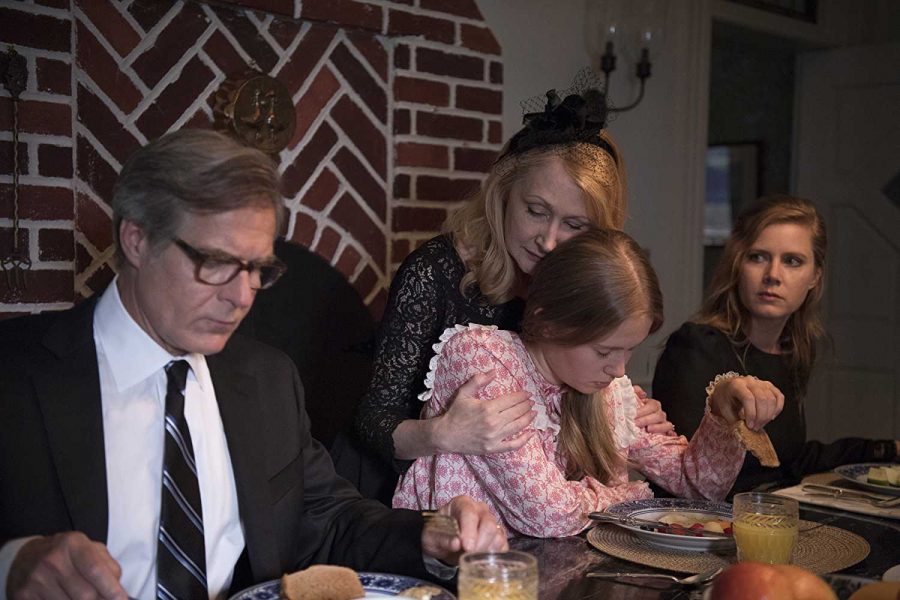
The investigation brews further as Detective Richard Willis, an aide in the investigation from Kansas City, digs deeper searching for clues, even as Camille carries out her own crusade to find any information that she can, much to Adora’s disdain. We also get a sense of Camille’s and the Crellin/Preaker family’s disturbed past as we see glimpses of Marian’s funeral, Camille’s sister who had mysteriously died of an ‘illness’ when she was young. The family then attends Natalie’s funeral.
An interesting revelation is when Camille, upon investigation, is told by some kids that Natalie was taken by the “Woman in White”, an age-old Wind Gap lore nobody really pays any heed to. Camille and Richard later get to talking and sharing findings, reluctantly so. As the episode ends, we see ‘Dirt’ inscribed over Camille’s lower abdomen, in her own skin.
‘Dirt’ here, could refer to the various instances of literal dirt in the episode (Richard scraping off mud samples from Bob Nash’s car, considering him to be a suspect, or the dirt in which Natalie kept her tarantula). Figuratively, it could mean the dirt Camille finds herself in as she goes deeper into the investigation, among the hate spewing and gossip mongering crowd of Wind Gap.
3. Fix
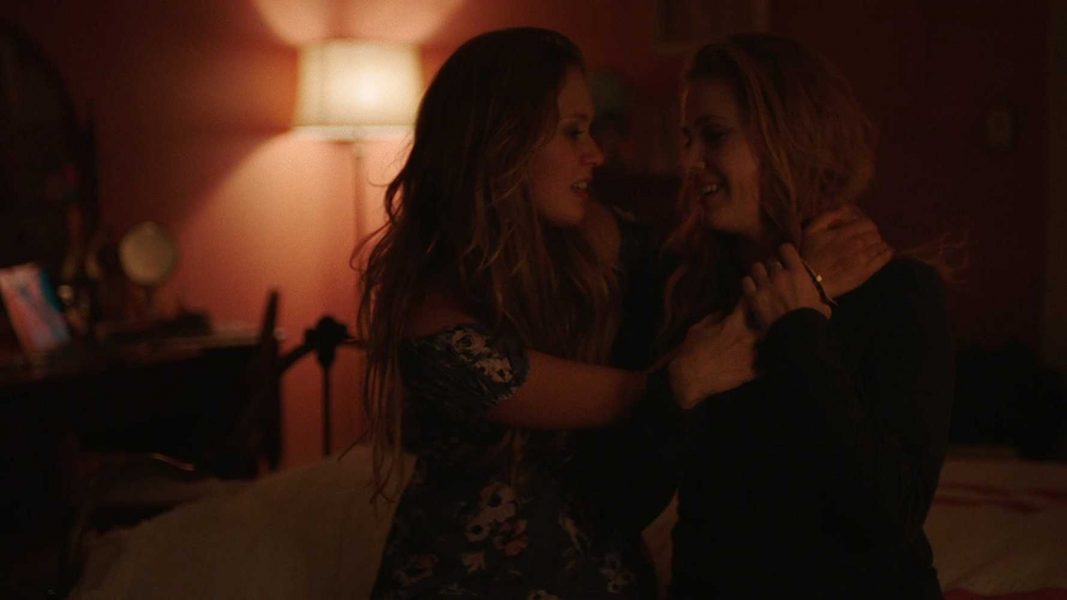
The main revelation from this episode is yet another glimpse into Camille’s painful past, when she reminisces over her time at a psychiatric facility, sharing her ward with Alice, another patient. The girls bond over common tastes in music and family issues, until one fateful day, Alice commits suicide by poisoning herself. Devastated, and in an extremely painful to watch scene, Camille carves the word ‘Fix’ on her arm using a bolt, profusely bleeding while doing so.
Other developments include Camille interviewing Bob Nash and John Keene, the closest relatives of the deceased girls in Wind Gap. John, she believes, is unlike the regular Wind Gap fare, drawing suspicion on him. Her interview with Bob Nash is interrupted as Adora lashes out on Camille for being insensitive, heeding warnings from the Chief of Police, Bill Vickery.
Camille and Amma too bond as half-sisters, when she tends to Amma following a night of drunken debauchery. It is here when the dual life Amma is leading is truly put into light. Her moments with Camille in the bedroom here bring out wildly differing shades of her character, unsettling and unnerving at the same time. The title of the episode here could allude to the episode’s ending, where we see three characters dealing with inner turmoil: Camille, Adora and Alan, all with different demons within, and how they choose to deal with it, to ‘fix’ it.
4. Ripe
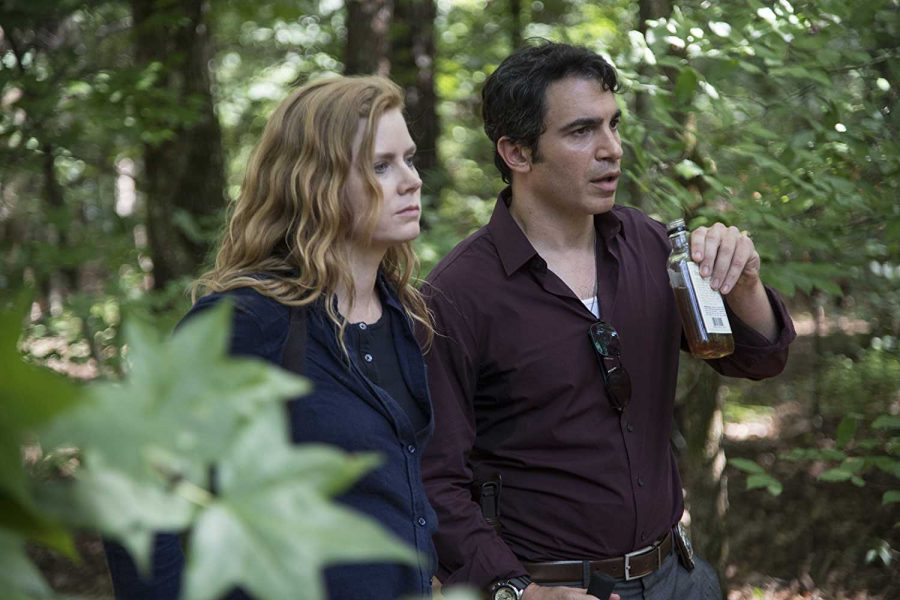
Camille heads over to Jackie O’Neill’s place for a lunch, where the ladies try to incite some gossip from Camille about the twin murders. She later meets Richard, showing him an old hunting shed, possibly alluding to it being a spot for nefarious activities back when Camille was a teenager. This brings back unpleasant memories of her running away from a bunch of guys, hinting that she was also probably raped in the hunting shed. Following this, the two get physical and Richard proceeds to pleasure Camille.
A distraught Camille has some intense conversations with Adora and Alan, who is condescending in her outlook of Camille, telling her that she smelled “Ripe”. This could possibly be pointing to the fact that Adora saw her and Richard kissing in the driveway, and disapproves of her promiscuous sexual ways. In the conversation, she also refers to her never being ‘sweet’, as if hinting that she was stripped of her innocence early in her life. In that sense, ‘Ripe’ forms a very raw, interesting allegory. If you choose not to go deeper, it could simply mean she smelled bad because of the alcohol and unkemptness.
Camille learns from John Keene over a drink at the bar that Amma was friends with Ann and Natalie and the three spent time at the creepy hunting shed. A worried Camille leaves in a frenzy as she has visions of Amma, dead in the hunting shed. The episode then ends in a delicious cliffhanger.
5. Closer
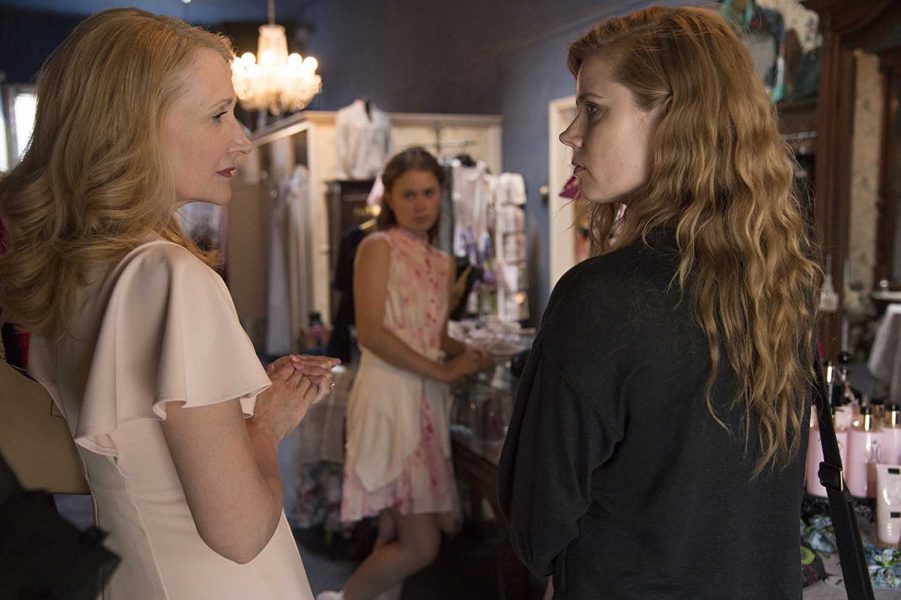
Calhoun Day, a traditional holiday, is upon Wind Gap. Despite the tense atmosphere, Adora decides to host the celebration, deeming it was what people needed. Camille publishes her article about the murders, infuriating Ashley, John’s girlfriend, who confronts her about not including her name in the writeup, revealing the show-pony nature of Wind Gap residents. Adora takes Richard on a tour of the house, and in the process, warns him of Camille, while showing him the various riches and novelties the house possesses. One room in particular catches the eye and attention, Adora’s bedroom, with a flooring of white ivory. Camille flashes back to her memory of being reprimanded for walking on that floor with soiled shoes during a photoshoot, while Adora proudly poses with Marian. In many ways, Marian was Adora’s perfect white ivory, and Camille, the ‘dirt’ on them.
As the celebrations progress, Amma enacts her part in the play, under influence, and runs away when a fight breaks out between a drunken Bob Nash and John Keene. Amma, missing for several hours is later discovered by Camille in the same hunting shed. A tense conversation at the Crellin house makes Adora remark that she never loved Camille. A heartbroken Camille leaves and meets Richard, proceeding to have sex with him. The title alludes to the audience moving ‘closer’ to the answers as the series crosses the halfway mark.
6. Cherry

Alan and Camille indulge in a conversation where he holds her responsible for her mother’s deteriorating health, shedding some light on Adora’s toxic relationship with her mother Joya, and comparing Camille with her, remarking that “she just liked to hurt people”. Camille later remembers her cheerleading days, one where she was particularly ridiculed by her friends for her period. It was Becca who helped her then and realised she was bleeding because she had the word ‘Cherry’ carved on her inner thigh. A startling discovery is Ann Nash’s mangled bike recovered from a pit in Adora’s farm, and a worker’s testimony that said he saw John Keene dump it there, escalating Keene to prime suspect.
Richard, following warnings from Adora, starts digging into Camille’s past and finds about her disturbing episodes, which also leads him into a conversation with Jackie. Amma later convinces Camille to come to a party with her, where they both drink and take drugs, until finally passing out in Camille’s room following a string of drunk conversations, as Adora watches in the corner, dissed at her daughters’ behaviour. Camille then watches an apparition of her deceased sister Marian who warns that it was not safe for her there. ‘Cherry’ here could be alluding to the foreboding of events, with its chromatic and thematic similarities to blood, or just an allegory with the fruit being compared to the psyche of our leading women here.
7. Falling
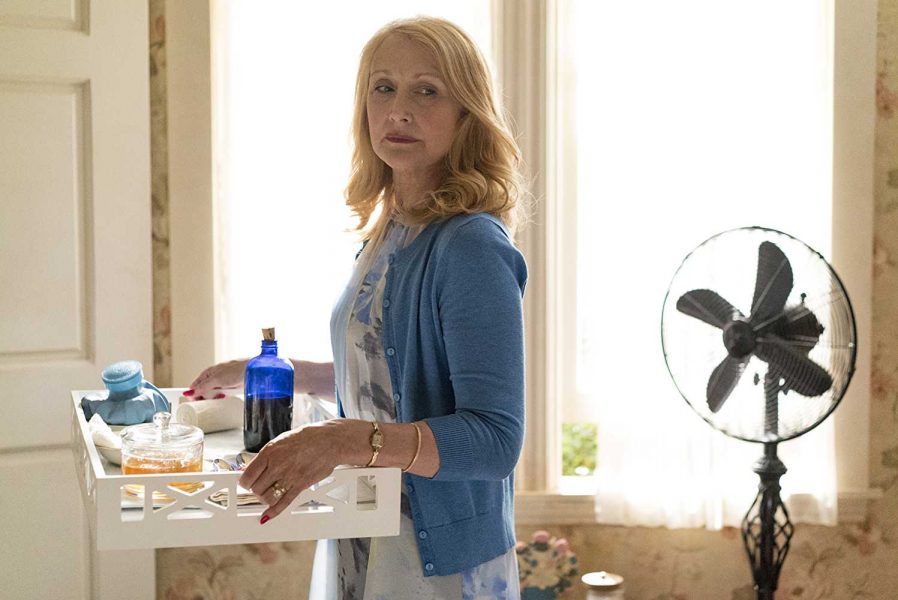
Following a drunken night, Camille wakes up to find herself dressed in a gown, and being nursed by Adora. Upon rejecting it, Adora shifts her attention to Amma. As Det. Richard digs deeper into the investigation of Marian’s death, he discovers that she likely died of poisoning at the hands of Adora, who most likely is suffering from Munchausen’s Syndrome by proxy. This is confirmed when she continues administering a ‘medicine’ to Amma that is clearly doing no good, under the false pretense of cure for her hangover.
The police finally discover a key piece of evidence again John Keene, after Ashley rats him out and set out to arrest him. Camille, aware of this, drives to a nearby bar in the neighbouring city hoping to find him there. The two have a drink and share moments of intimacy and shared exposition in a motel, where the police bust them and Richard is clearly disgusted at finding her in bed with John, ending their relationship on that instant. Camille later meets Jackie who reveals the reason Adora had Marian cremated was to avoid suspicion, confirming that she died of medicinal malpractice at Adora’s hands. Camille breaks down hysterically while talking to Curry, her editor, and chooses to confront her mother instead of returning to St. Louis. ‘Falling’, then, would simply allude to the fall our leading ladies: Adora, Camille and Amma have, given their current predicaments.
8. Milk
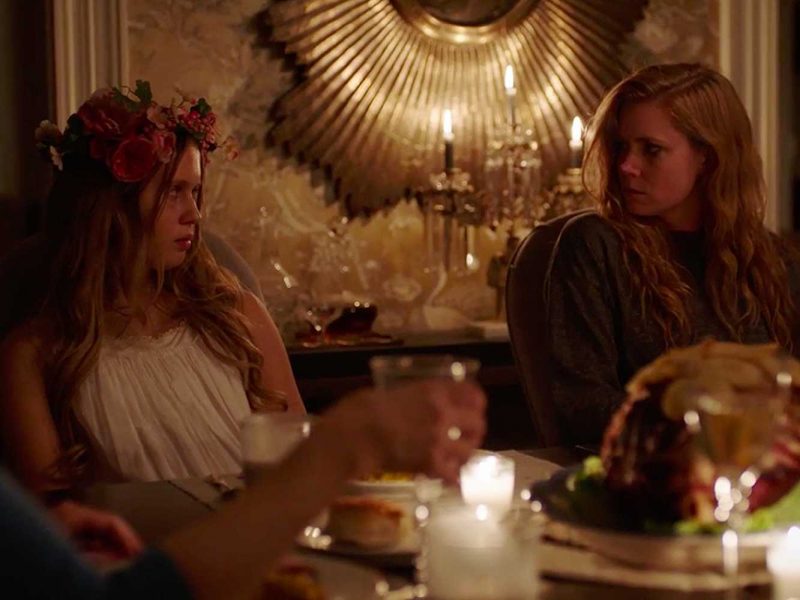
Upon returning home, Camille starts acting sick so as to divert Adora’s attention to herself, selflessly so. Camille’s body immediately rejects the ‘medicine’ Adora is brewing for her, yet she continues to take it in an effort to ‘save’ Amma. Richard, now aware of the truth, along with Vickery bust into the house and rescue Amma and Camille, also discovering a set of bloody pliers. Camille is later visited in the hospital by Richard, who tells her that the poison had traces of rat poison in it, to which Amma’s boy had developed a sort of resilience over the years. She never sees him again.
Amma is taken under Camille’s wing and they move back to St. Louis. All seems well, until Mae, a girl who is befriended by Amma and Camille, mysteriously goes missing. Situations tense up as Camille goes inside Amma’s room and discovers a broken tooth inside her dollhouse, finding much to her horror that the ivory floor of Adora’s room was modelled entirely of broken teeth in Amma’s dollhouse, providing sufficient evidence that she was, infact, the killer. Amma suddenly appears behind her and remarks, “Don’t tell Mama!”, as the screen cuts to black and credits appear. ‘Milk’ here alludes to the medicine that Adora administered to her daughters, much like mother’s milk, which in Adora’s eyes was the ultimate tonic for both her daughters, while it ended up doing quite the contrary.
The Ending and Post-Credits
Who killed Natalie and Ann?
Well, it you watched right till the end — and by the end I mean the post-credits scene as well, because that’s where we see how the murders actually happened — you already know that the killer actually was Amma, the 15-year-old half-sister of Camille. The police arrests Adora because of the evidence — pliers — that they find in her house and also due to the fact that she tried to poison Amma and Camille. Adora, in any case, would have been arrested on the charges that she killed her daughter; but Adora didn’t kill Natalie and Ann. Amma did.
If you didn’t see the post credits of the show, go back and check again. The real reveal, including the gruesome scenes of murders, are shown after the credits. In fact, Amma committed the first murder of Ann with the help of her two roller skate friends. The second murder, it seems, she committed in her carriage house (that’s why the blood under John’s bed). And she committed the third murder in what looked like a playground. It is also revealed that the lady in white that one of the kids saw was also her.
Why did Amma kill Natalie, Ann and Mae?
If you watched right till the end, director Jean-Marc Vallée reveals the reason to be jealousy. Amma not only killed Natalie and Ann, but she also murdered her new friend, Mae, that she met in St. Louis. All because of jealousy! In the seventh episode, it was revealed that Adora cared for both Natalie and Ann. Most likely, Amma couldn’t stomach her mother caring for them and decided to kill them. What is frightening is that she used their teeth to build the floor of her Doll House. Remember, Adora’s house has a room with the flooring made of ivory i.e. elephant’s teeth. Does that ring a bell?
Don’t forget that even though Amma is the killer, a lot of blame for that goes to Adora. She is not fit to be a mother, to say the least. Inadvertently, Amma grew up to become a psychopath who would do anything to get her mother’s attention, which she actually enjoyed. She turned into such a psychopath that she couldn’t bear the sight of her new friend trying to impress Camille — who had replaced Adora as the motherly figure in Amma’s life — and murdered her too.
Jealousy and contempt made Amma murder the three girls, but there are layers to peel here that unravel themselves beautifully (and harrowingly) as the show progresses, offering us some disturbing insights into the psyches of Camille, Amma and Adora. The show then acts as an instrument to dig deeper into the female state of mind, uncovering strata upon strata of emotions and how they choose to manifest themselves according to the many roles these women don.
Themes and Interpretations
Camille’s Psyche
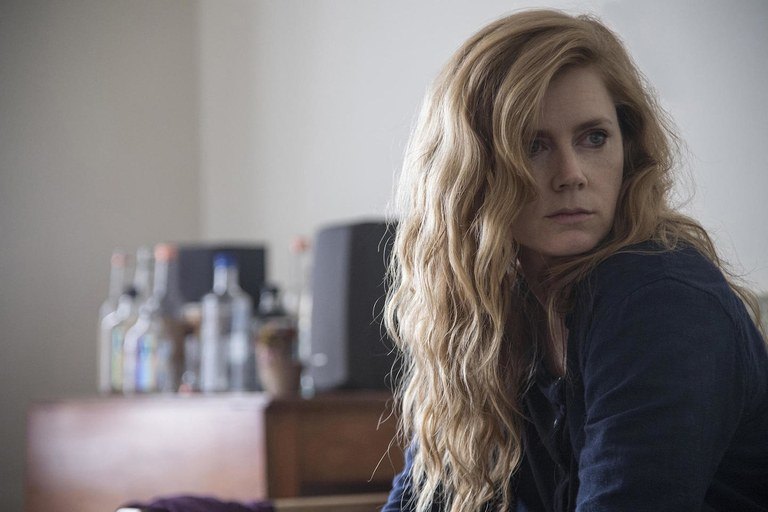
It would be safe to say that Camille is the leading lady of the show, and the show primarily focusses on her experiences from her past that still haunt her to the extent of being almost dementia-inducing wherein she experiences apparitions and hallucinations, and barely functions in her day-to-day, accompanied with a generous dose of alcohol to put her through. To add to this, her difficult relationship with her mother resurfaces as she travels back to her hometown for an investigation.
There is no simpler way to put it, Camille is damaged, in every sense of the word. Her past holds horrors she’d rather not talk about, including the death of her beloved sister Marian, and her roommate in the psychiatric ward, Alice. She had a difficult upbringing at the hands of Adora, who has already been revealed to have Munchausen’s by proxy. In that sense, Adora’s contempt for her is natural, and she is rightfully labelled as a rebel for not falling prey to her methods, for not being the perfect daughter, something for which Marian paid a heavy price.

Owing to the heavy toll this has had on her life, she is shown to have repeatedly indulged in self-harm along with substance abuse, carving up words on her body using ‘sharp objects’, so much so that the pain induced from these wounds provided her an escape from her real life, while also ensuring that the sanctity of her body be defiled, possibly an attempt by her psyche to keep her guarded, and not to open up, something that is visible in her moments of hesitating intimacy with Richard and John.
She grows to really care for Amma, as shown in the final few episodes of the series, possibly being manipulated by Amma all along as a cover-up, not to be revealed until the final moments of the show. Amma seemed to fill in the void Marian left, even if in brief transition, and behind all the crazy, she genuinely believed Amma looked upto her, “soulmates”, as Amma remarks. We believe that too, to an extent.
Adora’s Psyche
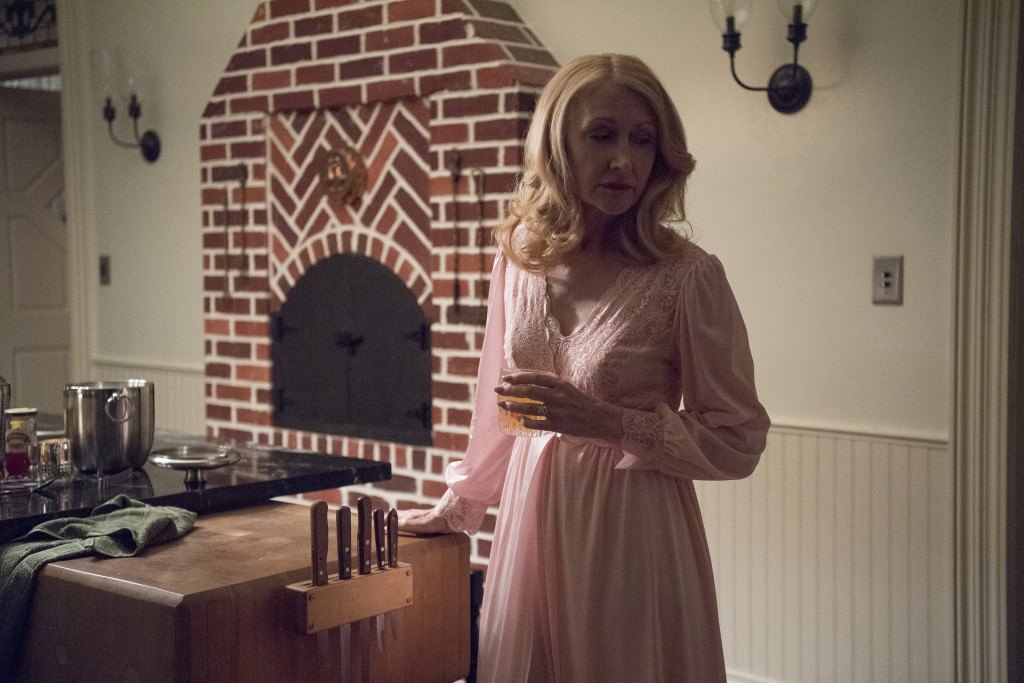
Adora’s words are the figurative ‘sharp objects’ that hurt Camille on levels that blades and knives couldn’t. The reason Camille has a scarred soul is Adora. No softer way to put it. On the outside, she is a socialite, and a wealthy patron and fellow of the city of Wind Gap, flawless in her image, and for a while, that’s all that she can care about. Her older ‘friends’ might have some dirty scoops on her, but the city treats her as loyal citizens would a first lady.
However, describing her condition as simply complying with Munchausen’s by proxy would be wrong, we have to trace the genesis here. I quote Alan from episode 6 of the series, Cherry. Speaking about Joya, Adora’s mother, he says, “She would stand guard over this house like a witch. The only time she ever smiled was when you (Camille) refused to nurse from Adora. She has had a hard life. Joya would come into her room in the middle of the night, and she would pinch her. She said that she was worried that Adora would die in her sleep. You know what I say? She just liked to hurt people.”
The last line might or might not be true. What we can concur, perhaps, is that probably Adora’s innate desire to care, even tending to the harm inflicted on her children by her own self, is a result of her relationship with her mother in the first place. It is completely possible that her psyche allows her to forcibly inflict harm upon her children, only to lovingly tend to it later being seen as the perfect mother, just as she would’ve wanted Joya to care about her when she was young. Her Munchausen’s by proxy was the yin to Amma’s yang, her Munchausen’s syndrome. What no one presumed, perhaps, was what monstrous proportions her innate need to be loved and cared for would take.
She is also seen plucking her eyelashes on the show, multiple times. Most likely, it is a sign of Trichotillomania, a distant cousin of OCD induced due to the stress she partakes because of Camille’s arrival in Wind Gap and her investigation, as we later see Camille apologizing on one of Adora’s eyelash-pulling instances as well. Turns out, that is the least one of her psychological problems.
Amma’s Psyche
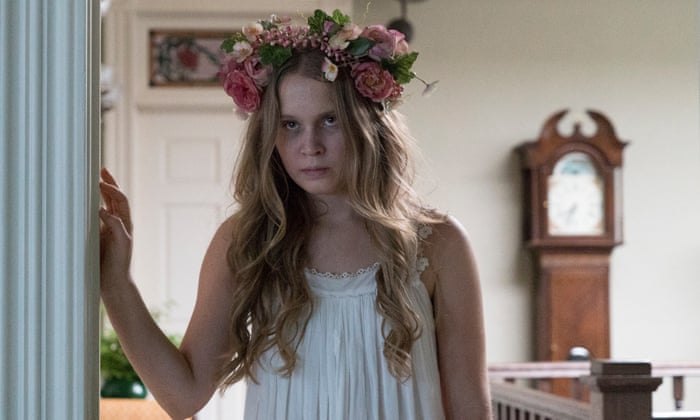
Amma is a sociopath, and a borderline psychopath (borderline because she still feels a plethora of emotions that define her) who, by the end of the series developed into a homicidal maniac with three murders to her name, none of which came to light until too late. Not only were the murders committed by her extremely brutal and completely uncharacteristic of a 15 year old girl, it was what followed after that is not explained by either her upbringing, which was not as troubled as Camille’s, or her Munchausen’s. Pulling the teeth of one’s victim is a barbaric act unto itself. Amma went a step further and decorated her dollhouse’s ‘ivory’ floor with them, which is demented on a completely different level.
Following the death of Marian and Camille moving out, Amma became Adora’s perfect dolled up daughter, and her lab rat. Again, it is quite possible that her Munchausen’s developed because of Adora’s excessive caring, which resulted in her resenting and acting out violently whenever she didn’t have Adora’s attention, which led her to murder the two girls, Ann and Natalie. Later, with Adora gone, she begins looking up to Camille as a mother figure, and gets rid of Mae when she sees Camille is in appreciation of Mae’s career choices and may come to favour her more.
The mother-daughter relationships in the show, as vital as they are to the plot and proceedings, also paint a very interesting picture of how psychological disorders may as much be inflicted as they are acquired, that it may be a two-way system in the first place.
Growing up in the dreadfully quiet town of Wind Gap, under Adora’s watchful eye, Amma develops and maintains a kind of dual identity. One where she roams the streets drunk, carefree in her roller skates with friends, and indulges in substance abuse in clothes of her pleasing. The second, where she adopts ladylike mannerisms and dons elegant dressed to be presentable for Adora and her elite circle. Constantly being torn apart between these two lives is also bound to add to the pressures of an unstable mind. However, that doesn’t take away from her extremely coy and cunning nature wherein she possibly manipulated both Adora and Camille to keep them off her scent.
The cycle of vicious upbringing

Having stated and understood the modus operandi of the murders, and discussed the psyches of our three main characters populating Flynn’s futile and darkly psychological world, we shed some light on what appears to be a cycle of vicious upbringing in a family where Camille turns out to be the sanest character, and that’s really saying something. Though the ‘sickness’ might not have been passed in the family biologically (while Munchausen’s or its by-proxy could have, really), it’s clear what results a debased upbringing can have. With Adora’s maiden family, what appears to have been started with Joya’s abusive relationship with Adora, probably manifested into her need to be seen as a loving mother, compulsively so. Among her three daughters, while Marion fell prey to it, and Camille turned out to be damaged in her own sense having escaped when the hour was right, Amma succumbed to it, developing an affliction for it for herself. Her obsessive need to be loved and Adora’s constant attention later manifested itself in horrific ways, for which three innocent girls had to pay the price.
Wind Gap

I have almost instantaneous appreciation for stories wherein a physical place as seen on camera becomes a living, breathing character in itself, interacting with the residents and forming an essential part of their existence in the narrative; so much, so that while intended as a backdrop, you can’t really imagine a change of setting for the story to unfold. While it could be a city, town, street, motel or even a room, it is imbued with impeccable character in line with the tone of the narrative. Here, that role is fulfilled by the fictional town of Wind Gap in Missouri, somewhere near the southernmost part.

As Camille steps into her hometown, she is greeted by a graffiti that says, “Welcome to Wind Gap”, and from the narrow alleyways and deserted streets in the scorching temperatures, one almost immediately gets the sense that something is horribly wrong with the town. The town is (in)famous for its hog butchering business, and now for the disappearance of two little girls in what appears to be a close-knit community of locals, an everybody-knows-everybody kind of town, which is a perfect setting for a whodunnit in my opinion. Everything from the gas station, to the motel, diner, barber and convenience store look eerily similar, yet come across as places you wouldn’t want to visit alone, even in the broad of day. Some excellent scouting work for the location manager here in breathing life into Flynn’s fictional landscape so perfectly.

The Crellin Estate for instance, the second major location where a lot of the action takes place, is sprawling and beautiful, yet gives off a sense of years of deeply buried secrets. The somber colour palette and moody lighting add to the uneasiness. The director wanted “a house that if someone was screaming, you would never hear them,” and I think he got exactly that.
In closing
I would say that ‘Sharp Objects’ is one hell of a show, while also admitting that it is increasingly difficult to watch. Unfailingly, the show has a very niche group of audience it would appeal to. It operates simultaneously as a whodunnit, an examination of the psyche of a handful of broken women and their upbringing, while diving deep into the complex web of emotions and thoughts that constitute a person, also represented by random, quick cuts in scenes showing seemingly unrelated visuals derivative of Camille’s conflicted state of mind.
While hailing the show as a win-win, I couldn’t help but digress and wonder that if anyone needs psychological help, they must get it. Mental disturbances/illnesses, almost always have a genesis or a source or a backstory involved. If you want to help, start with compassion; start with listening and looking out.
Read More in Explainers: Mindhunter | Stranger Things

